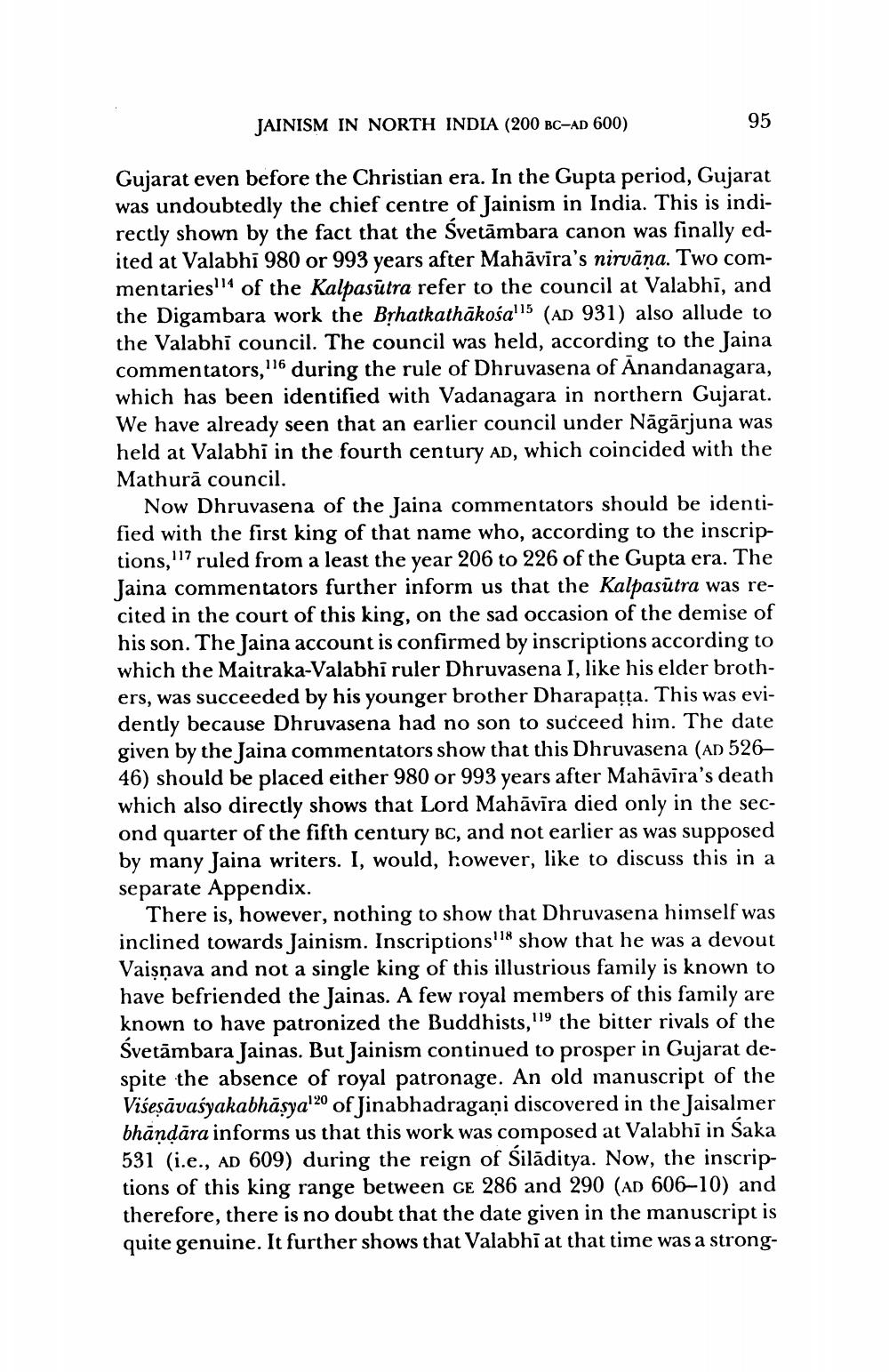________________
JAINISM IN NORTH INDIA (200 BC-AD 600)
95
Guiarat even before the Christian era. In the Gupta period, Gujarat was undoubtedly the chief centre of Jainism in India. This is indirectly shown by the fact that the Svetāmbara canon was finally edited at Valabhi 980 or 993 years after Mahāvīra's nirvāņa. Two commentaries!!4 of the Kalpasūtra refer to the council at Valabhi, and the Digambara work the Byhatkathākośal!5 (AD 931) also allude to the Valabhi council. The council was held, according to the Jaina commentators, 116 during the rule of Dhruvasena of Anandanagara, which has been identified with Vadanagara in northern Gujarat. We have already seen that an earlier council under Nāgārjuna was held at Valabhi in the fourth century AD, which coincided with the Mathurā council.
Now Dhruvasena of the Jaina commentators should be identified with the first king of that name who, according to the inscrip tions,"7 ruled from a least the year 206 to 226 of the Gupta era. The Jaina commentators further inform us that the Kalpasūtra was recited in the court of this king, on the sad occasion of the demise of his son. The Jaina account is confirmed by inscriptions according to which the Maitraka-Valabhi ruler Dhruvasena I, like his elder brothers, was succeeded by his younger brother Dharapațța. This was evidently because Dhruvasena had no son to succeed him. The date given by the Jaina commentators show that this Dhruvasena (AD 52646) should be placed either 980 or 993 years after Mahāvīra's death which also directly shows that Lord Mahāvīra died only in the second quarter of the fifth century BC, and not earlier as was supposed by many Jaina writers. I, would, however, like to discuss this in a separate Appendix.
There is, however, nothing to show that Dhruvasena himself was inclined towards Jainism. Inscriptions'18 show that he was a devout Vaisnava and not a single king of this illustrious family is known to have befriended the Jainas. A few royal members of this family are known to have patronized the Buddhists, "9 the bitter rivals of the Śvetāmbara Jainas. But Jainism continued to prosper in Gujarat despite the absence of royal patronage. An old manuscript of the Viseșāvasyakabhāsyal20 of Jinabhadragani discovered in the Jaisalmer bhāņdāra informs us that this work was composed at Valabhi in Saka 531 (i.e., AD 609) during the reign of Silāditya. Now, the inscriptions of this king range between ce 286 and 290 (AD 606-10) and therefore, there is no doubt that the date given in the manuscript is quite genuine. It further shows that Valabhi at that time was a strong




